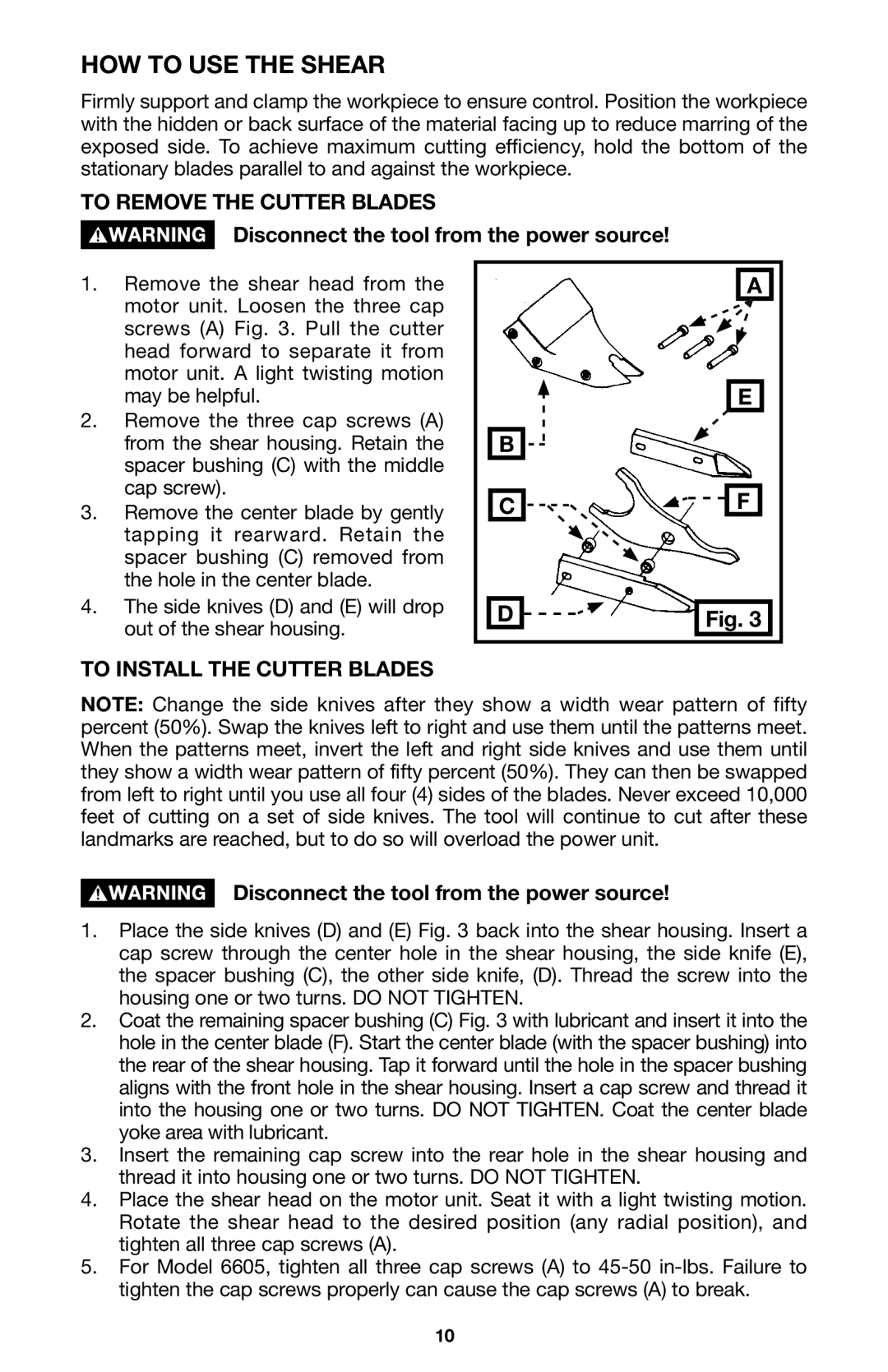6605 specifications
The Porter-Cable 6605 is a highly regarded tool in the realm of power saws, particularly known for its efficacy in making precision cuts in a variety of materials. Tailored for both professional contractors and DIY enthusiasts, this product blends performance, durability, and user-friendly features, making it a go-to choice for many woodworking and construction projects.One of the standout features of the Porter-Cable 6605 is its powerful motor. Equipped with a robust 6.5-amp motor, this tool ensures the ability to handle intricate cuts and heavy-duty tasks with ease. The consistent power output enables smooth and efficient cutting through both soft and hard woods, while also providing versatility when working with engineered materials.
The design of the 6605 emphasizes user comfort and control. It boasts an ergonomic handle that reduces fatigue during extended use, allowing users to maintain precision without risking strain. Lightweight and compact, this saw is easy to maneuver, making it suitable for both overhead and intricate work. Additionally, the saw features a sturdy base that enhances stability during operation, resulting in straighter cuts.
In terms of technology, the Porter-Cable 6605 utilizes a keyless blade change system, which allows for quick and efficient blade swaps, enabling users to transition between various cutting tasks without delay. This feature aligns with the tool’s intended purpose of maximizing productivity on the job site or in the workshop. The tool is also compatible with a range of blade types, providing enhanced flexibility for different applications.
Another essential characteristic of the Porter-Cable 6605 is its adjustable cutting depth and bevel angle settings. With the capability to make cuts up to 2 inches deep and a bevel capacity of 45 degrees, users can achieve a range of cutting angles and depths, catering to diverse project requirements.
Furthermore, safety features, such as the blade guard and the safety switch, enhance the overall user experience by minimizing the risk of accidents. By prioritizing safety without compromising on performance, the Porter-Cable 6605 establishes itself as a reliable powerhouse in the toolkit of any woodworker or contractor.
In summary, the Porter-Cable 6605 combines power, precision, and versatility, offering an array of features that bolster its role as an essential tool for cutting tasks. With its user-centric design, advanced technology, and safety features, it remains a preferred choice for those seeking reliable performance in a portable electric saw.

